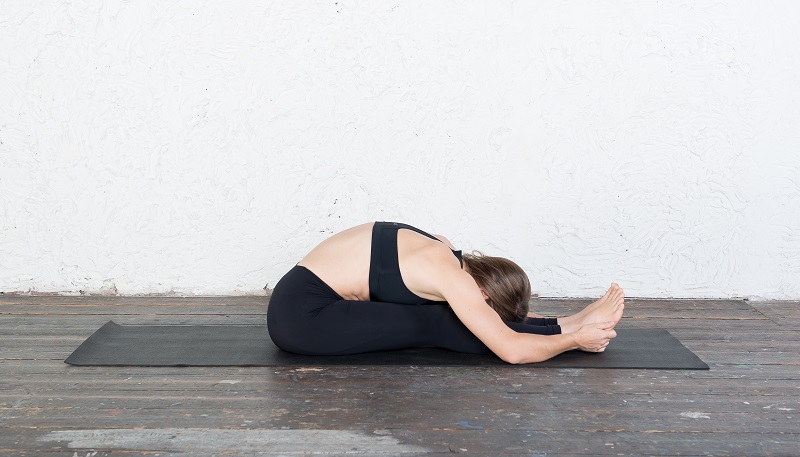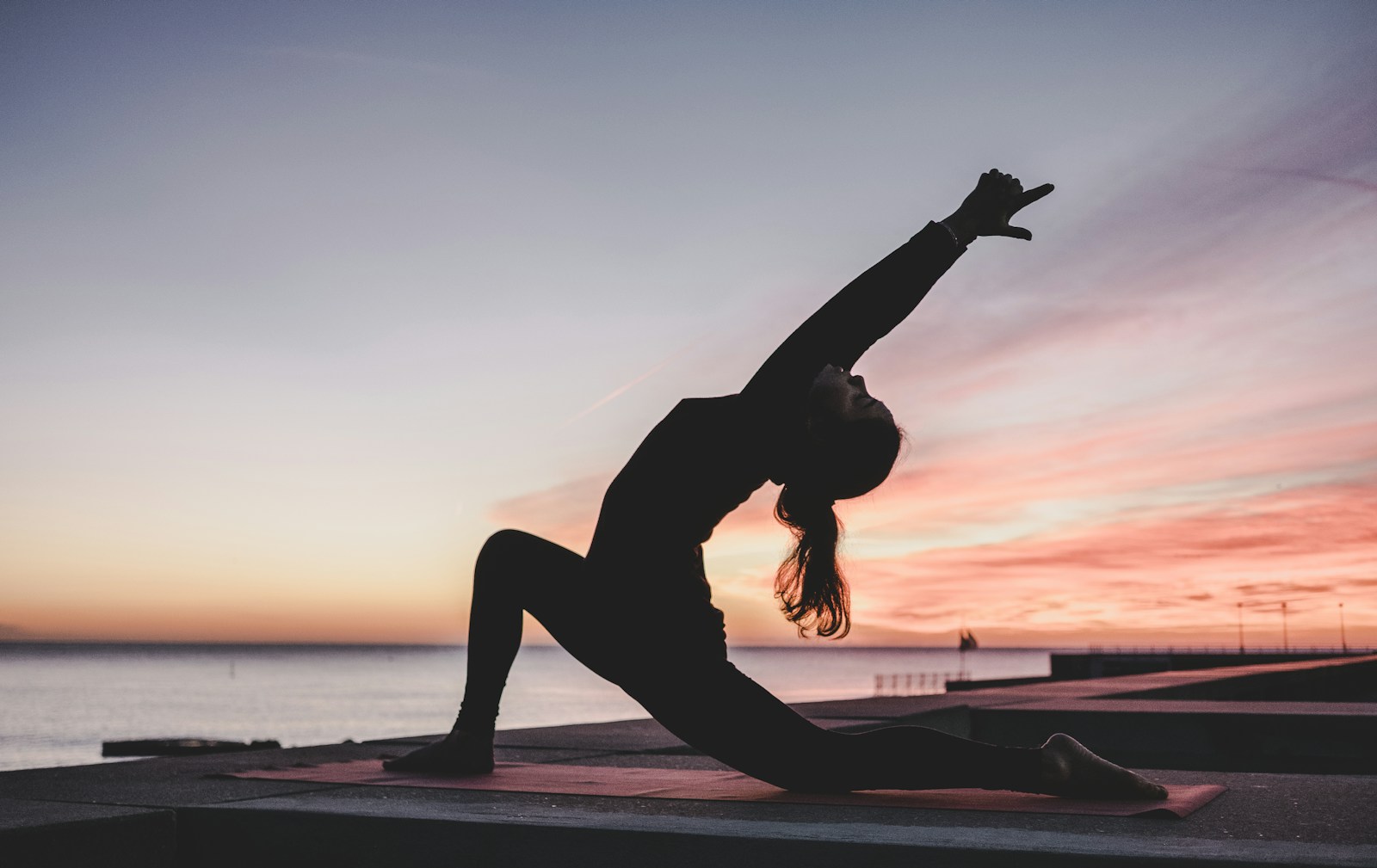Yoga For Stress Relief: Impact of Chronic Stress and What You Can Do About It

It is a well known fact that many people practice Yoga for stress relief. For thousands of years, yoga has been known and loved for its calming and stress-relieving benefits through movement and breathwork. Personally, when I do a short sun salutation or downward facing dog, I immediately get out of fight or flight mode.
Chronic stress can have a profound and negative impact on the body, affecting both physical and mental health.
In today’s fast-paced world, numerous factors contribute to the heightened levels of stress experienced by many individuals. These stressors encompass the pressures of work, with demanding schedules and high job expectations, along with the constant connectivity of technology, leading to information overload and social media pressures.
Financial concerns, driven by economic instability and rising living costs, further compound stress, often coupled with worries about job security and retirement savings.
The pervasive culture of social comparison on platforms like social media can foster feelings of inadequacy and anxiety.
Health concerns, especially during events like the COVID-19 pandemic, also contribute to personal and collective stress.
Environmental issues, family conflicts, and relationship challenges add to the complex landscape of stressors.
Struggles to balance work and personal life, political and social uncertainties, isolation despite digital connectivity, the pressure to succeed, and the constant need for multitasking all contribute to the modern stress epidemic.
Recognizing these sources of stress and adopting healthy coping mechanisms, such as exercise, mindfulness, and seeking support, is essential for managing and mitigating its impact on our well-being.

How Does Chronic Stress Impact Our Health?
- Cardiovascular System:
- Increased stress hormones like cortisol and adrenaline lead to elevated blood pressure and heart rate, which will increase the risk of hypertension and cardiovascular diseases.
- Chronic stress can contribute to the development of atherosclerosis (hardening of the arteries) and increase the risk of heart attacks and strokes.
- Immune System:
- Prolonged stress can suppress the immune system, making the body more susceptible to infections and illnesses.
- It can exacerbate autoimmune diseases and delay wound healing.
- Digestive System:
- Chronic stress can lead to gastrointestinal problems such as irritable bowel syndrome (IBS), and indigestion, and even exacerbate conditions like inflammatory bowel disease (IBD).
- It can also affect eating habits, leading to overeating or undereating.
- Musculoskeletal System:
- Stress often leads to muscle tension and can result in chronic musculoskeletal pain, such as tension headaches and back pain.
- It may also contribute to conditions like fibromyalgia.
- Respiratory System:
- Stress can exacerbate respiratory conditions like asthma.
- It may lead to shallow breathing and increased susceptibility to respiratory infections.
- Endocrine System:
- Chronic stress can disrupt the balance of hormones in the body, potentially leading to hormonal imbalances, menstrual irregularities, and fertility problems.
- It can contribute to the development of conditions like type 2 diabetes.
- Mental Health:
- Chronic stress is a major risk factor for the development or exacerbation of mental health disorders such as anxiety and depression.
- It can impair cognitive function, memory, and concentration.
- Sleep:
- Stress often leads to sleep disturbances, including insomnia and disrupted sleep patterns.
- Poor sleep, in turn, can exacerbate stress, creating a vicious cycle.
- Weight Gain:
- Skin:
- Chronic stress can exacerbate skin conditions like eczema, psoriasis, and acne.
- It can also lead to premature aging of the skin
Let’s explore how Yoga can help you manage stress and anxiety in your life.
According to a study posted by the NIH “Depression, anxiety, and stress decreased significantly in women after 12 sessions of regular hatha yoga practice.”

Benefits of Yoga for Stress and Anxiety, According to Science:
- Reduces stress hormones Yoga has been shown to reduce the levels of stress hormones, such as cortisol, in the body. Cortisol is known as the stress hormone, and it is released in response to stress. When cortisol levels are elevated, it can lead to a variety of health problems, including anxiety, depression, and weight gain. Yoga can help reduce cortisol levels, leading to a reduction in stress and anxiety.
- Promotes relaxation Yoga promotes relaxation by activating the parasympathetic nervous system, also known as the rest and digest response. This response helps to slow down the heart rate, lower blood pressure, and reduce muscle tension, which can all contribute to stress reduction.
- Improve sleep Stress can make it difficult to fall asleep and stay asleep. Yoga has been shown to improve sleep quality by reducing stress and promoting relaxation. Practicing yoga before bed can help calm the mind and prepare the body for a restful night’s sleep.
- Increases Mindfulness Mindfulness is the practice of being present and aware of the “now”. Yoga encourages mindfulness by focusing on the breath in combination with the movement (or stillness) of the body. Practicing yoga regularly can help increase mindfulness, which in turn helps reduce stress and anxiety.
- Boost mood Yoga has been shown to boost mood by increasing the production of feel-good hormones, such as serotonin and dopamine. These hormones are responsible for regulating mood, and low levels have been linked to depression and anxiety. By boosting the production of these hormones, yoga can help improve mood and reduce stress.
- Improve overall well-being Yoga has many benefits beyond stress reduction. It can help improve flexibility, balance, and strength, which can all contribute to overall well-being. By improving physical health, yoga can also help reduce stress and promote relaxation.
4 Best Yoga Poses to Promote relaxation
These four yoga poses are undoubtedly some of the most effective and widely-praised postures for achieving a sense of calm and relaxation.
- Child’s Pose (Balasana):
- Child’s Pose is a gentle resting pose that helps release tension in the back, shoulders, and neck. Start by kneeling on the floor with your big toes touching and knees hip-width apart. As you exhale, slowly lower your torso down and extend your arms forward with your palms resting on the mat. Allow your forehead to come to the floor or a prop, if needed, to support your head. Relax your whole body, breathing deeply and feeling the calming effect as you surrender into the pose.
- Benefits: Balasana stretches the lower back, hips, and thighs while promoting a sense of surrender and tranquility.

- Legs-Up-the-Wall Pose (Viparita Karani):
- This restorative pose involves lying on your back with your legs extended vertically against a wall. Scoot your hips as close to the wall as comfortable and extend your legs upward. Rest your arms by your sides or on your belly, close your eyes, and breathe deeply and slowly. Allow gravity to gently reverse the blood flow and promote relaxation throughout the body.
- Benefits: Viparita Karani helps soothe the nervous system, relieve tired legs, and reduce anxiety and stress.
- Corpse Pose (Savasana):
- Savasana is the ultimate relaxation pose, often practiced at the end of a yoga session. Lie flat on your back with your legs slightly apart and arms relaxed by your sides, palms facing up. Close your eyes and let go of any physical or mental tension. Focus on your breath and allow yourself to completely surrender to the present moment, experiencing deep relaxation and stillness.
- Benefits: Savasana calms the mind, reduces stress, and allows the body to integrate the benefits of the yoga practice.
- Seated Forward Bend (Paschimottanasana):
- This seated yoga pose involves sitting with your legs extended straight in front of you. Inhale deeply, lengthen your spine, and as you exhale, hinge at your hips to reach forward. Hold onto your shins, ankles, or feet, depending on your flexibility. Relax your shoulders and neck, allowing your head to hang naturally. Breathe deeply and find a comfortable stretch without forcing your body.
- Benefits: Paschimottanasana stretches the entire back of the body, relieving tension in the spine and calming the mind.

These yoga poses can be practiced individually or combined into a calming sequence, depending on your preferences and time availability. Remember to listen to your body and practice with a gentle, non-judgmental approach to reap the full benefits of relaxation and tranquility that yoga offers.
Other Ways To Reduce the Impact of Chronic Stress On Your Health:
Reducing chronic stress involves adopting a holistic approach that addresses physical, emotional, and lifestyle factors. While yoga is a beneficial practice for stress reduction, there are many other effective strategies you can incorporate into your daily life:
- Regular Exercise: Engaging in regular physical activity, such as walking, jogging, swimming, or strength training, can help reduce stress by promoting the release of endorphins, which are natural mood lifters.
- Meditation: Mindfulness meditation and deep breathing exercises can help calm your mind, reduce anxiety, and improve your ability to manage stress. Apps like Headspace and Calm offer guided meditation sessions.
- Progressive Muscle Relaxation: This technique involves systematically tensing and then relaxing different muscle groups in your body. It can help relieve physical tension and reduce stress.
- Deep Breathing: Practicing deep, diaphragmatic breathing can activate your body’s relaxation response. Try techniques like the 4-7-8 or box breathing methods.
- Mindfulness: Being present in the moment and paying attention to your thoughts and feelings without judgment can help you manage stress more effectively. Mindfulness can be practiced throughout the day in various situations.
- Aromatherapy: Certain scents, like lavender, chamomile, and eucalyptus, can have a calming effect on the mind. You can use essential oils, candles, or diffusers to incorporate aromatherapy into your routine.
- Progressive Relaxation: Similar to progressive muscle relaxation, this technique involves consciously relaxing different areas of your body, focusing on letting go of tension.
- Healthy Diet: Eating a well-balanced diet rich in whole foods, including fruits, vegetables, and lean proteins, can help stabilize your mood and energy levels.
- Adequate Sleep: Ensure you get enough quality sleep each night to allow your body and mind to recover from daily stressors.
- Social Support: Spending time with loved ones, talking to friends, and seeking support from a therapist or counselor can provide emotional relief and help you cope with stress.
You May Also Enjoy: Yoga Strtretches to Relieve Neck Pain



